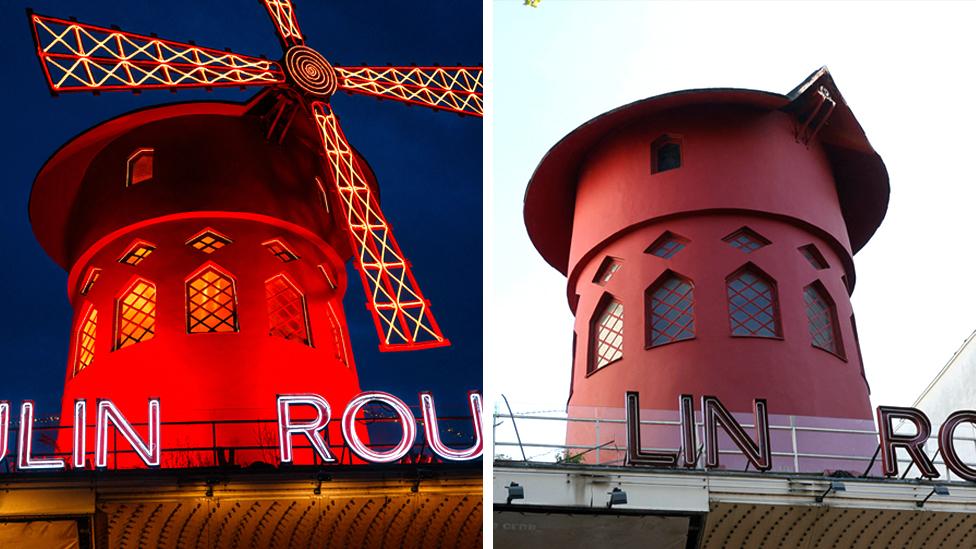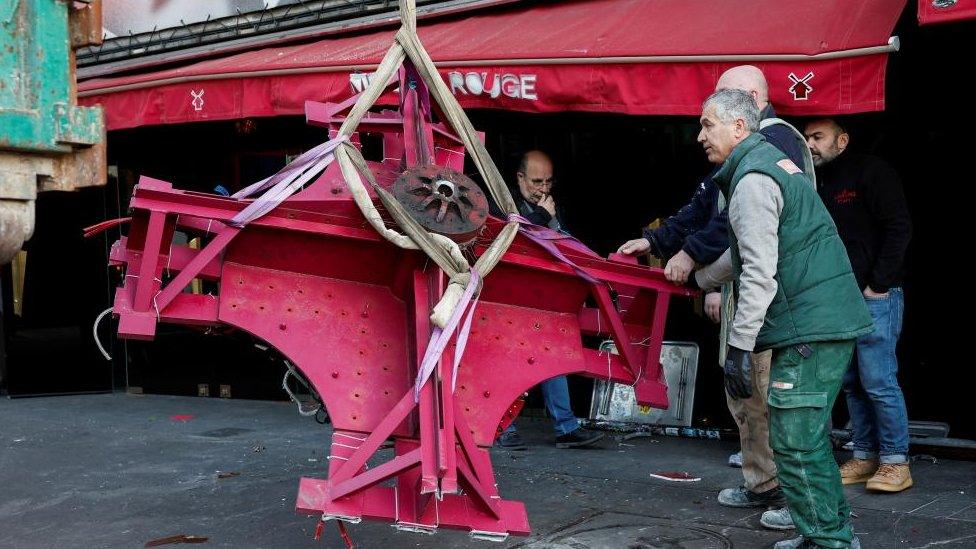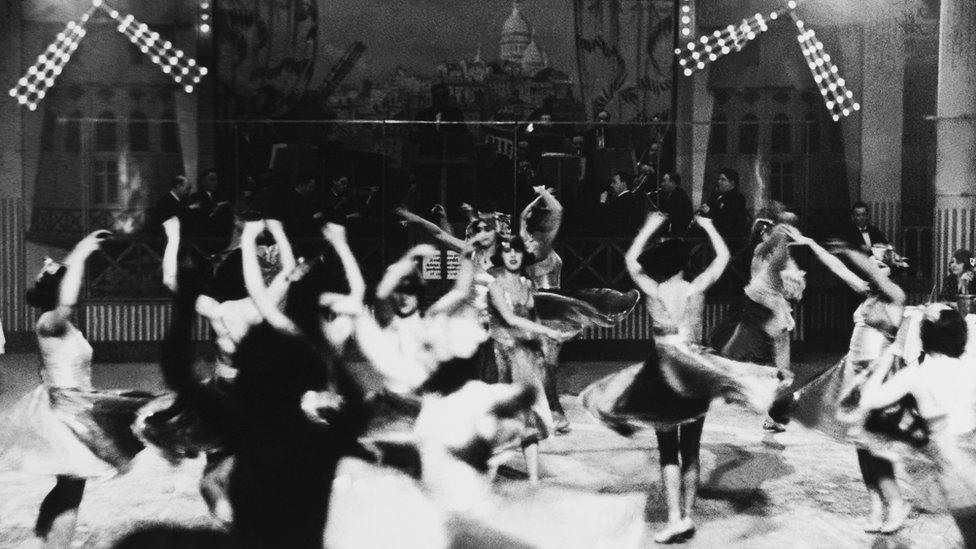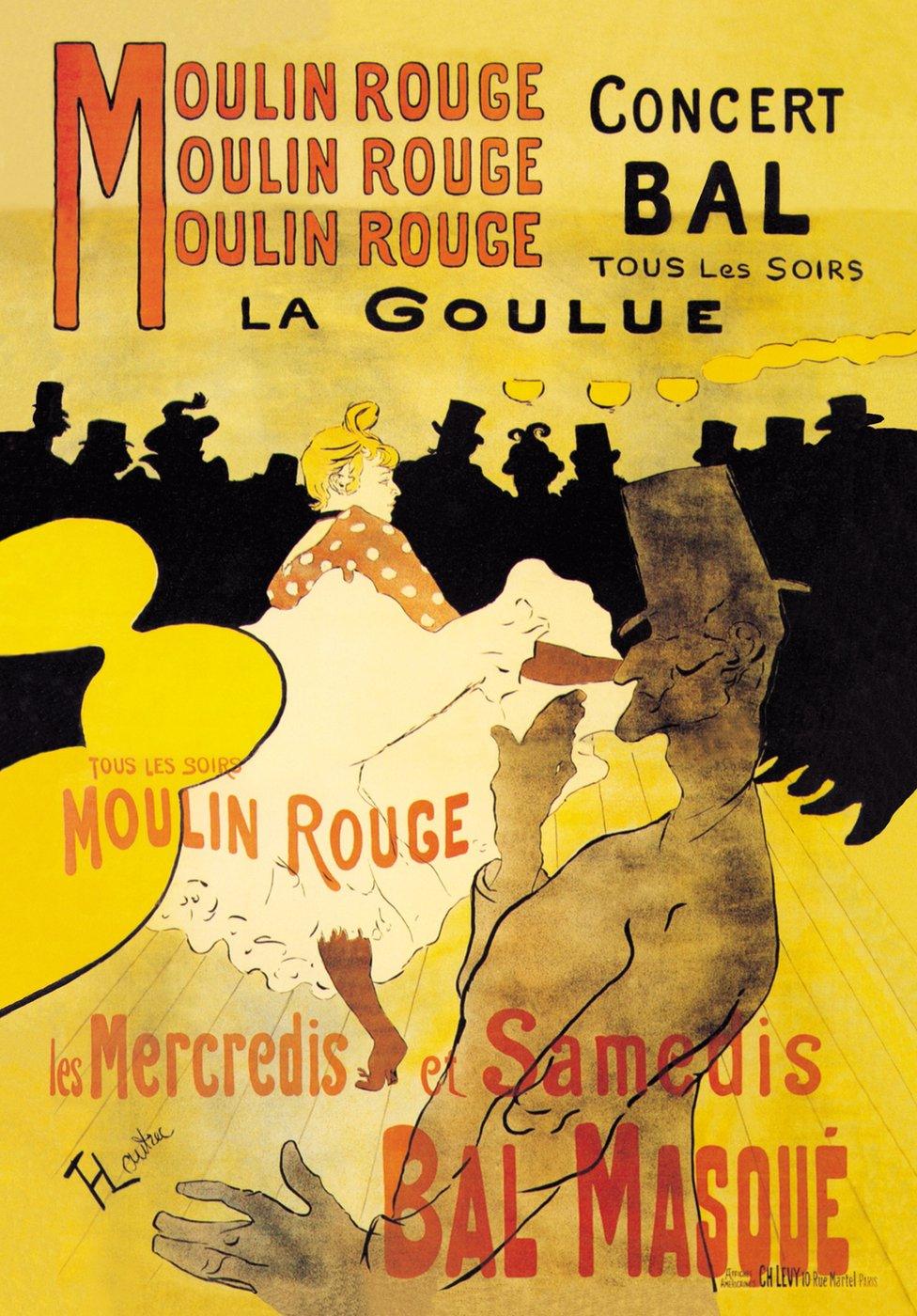Moulin Rouge: Sails fall off Paris's famous cabaret club overnight
- Published

The windmill on top of the world-famous Moulin Rouge cabaret club in Paris has lost its sails.
The blades fell on to the street below in the early hours of the morning. The cause of the collapse is not clear.
Police say there were no injuries. The first three letters of the Moulin Rouge sign also fell off.
A fixture of Parisian nightlife since its opening in 1889, the club is known as the birthplace of the can-can.
The incident comes just months before the French capital hosts the Olympics.
Initial images on social media showed the sails lying on the street below, with some of the blades slightly bent.
The structure has since been secured against the facade of the cabaret and covered up by green tarpaulin for safety.

Parisian firefighters said there was no risk of further collapse.
It was not an especially windy night and a Moulin Rouge official told AFP news agency that the cabaret's technical teams checked the windmill mechanism every week and had not noted any problems.
Jean-Victor Clerico, the director of the cabaret, said there was no sign of "foul play", adding the cause was "obviously a technical problem".
The only serious accident the landmark has endured was a fire that erupted during works in 1915, when the original Moulin Rouge burned to the ground.
The cabaret, with its distinctive red windmill blades, is located in the northern Paris district of Pigalle and is one of the most visited landmarks in the city. It opened its doors in October 1889 at the foot of the Montmartre hill.

Moulin Rouge has been a fixture of Paris's nightlife for more than 100 years
It quickly became synonymous with crazy Parisian nights and a stop to look at its facade or catch a show inside is a must-do on many tourists' lists of things to do in the French capital.
On Thursday morning, some Parisians came to see what had happened.
Speaking to Le Parisien newspaper, local resident André Duval, head waiter at the Moulin Rouge in the 1980s, said: "Paris without its windmill is like Paris without its Eiffel Tower."
Another resident, Raphaël, said it was "quite disturbing" to see the windmill without the sails, but the main thing was that there had been no injuries.
In the 1890s, French artist Henri de Toulouse-Lautrec became a regular visitor to the club and is credited for immortalising the Moulin Rouge during the period known as "La Belle Époque" - the years from the late 19th Century to the outbreak of World War One.
His advertisement posters for the cabaret featured the can-can dancers and became some of his most recognisable work.
Focusing on the decadence of Parisian society at the time, Toulouse-Lautrec helped enshrine the cabaret's reputation as the ultimate burlesque palace of the 19th Century.

Lautrec’s big break came in 1891 when Charles Zidler, manager of the Moulin Rouge, asked him to design a poster. Moulin Rouge, La Goulue (1891)
A century later, it was the musical romantic drama film by Baz Luhrmann - Moulin Rouge! - starring Nicole Kidman and Ewan McGregor that took the story of the cabaret to a whole new audience.
The Moulin Rouge became famous for its can-can and topless dancers, with an early edition of the Oxford Companion to Music calling the can-can "a boisterous and latterly indecorous dance, exploited in Paris for the benefit of such British and American tourists as will pay well to be shocked".
Today some of the dancers continue to perform topless and the costumes are known to be somewhat risqué. The Moulin Rouge website advertises the experience as appropriate for families with children from six years old, but warns that some shows include passages with nudity.
The cabaret is due to celebrate its 135th anniversary on 6 October.
Related topics
- Published25 February 2016
